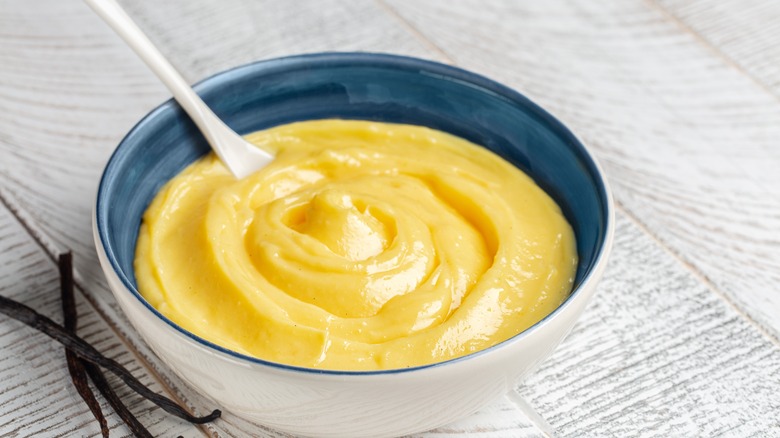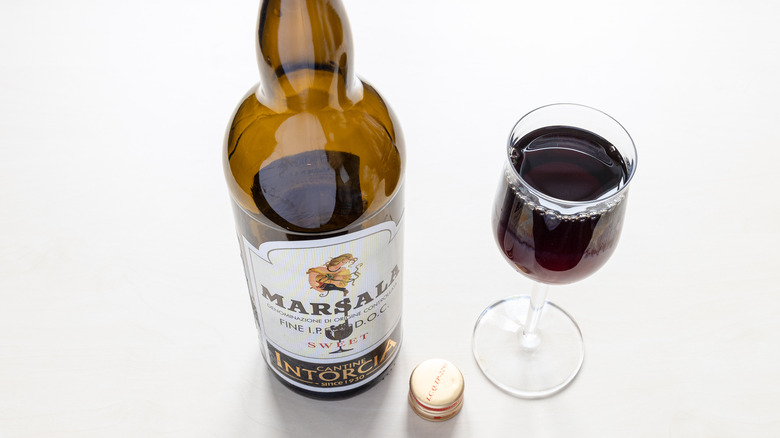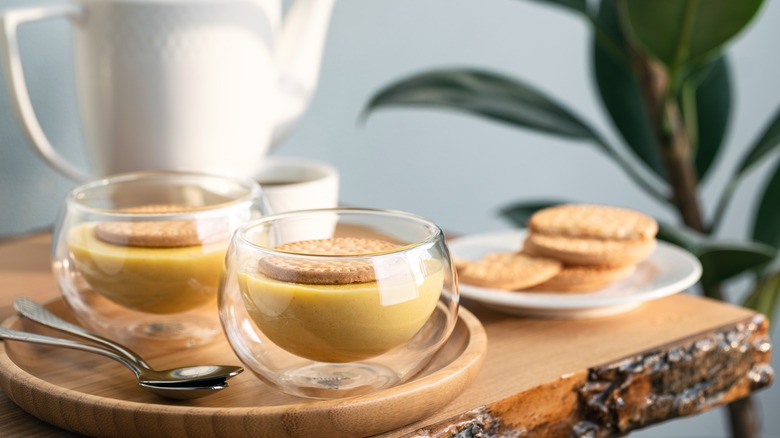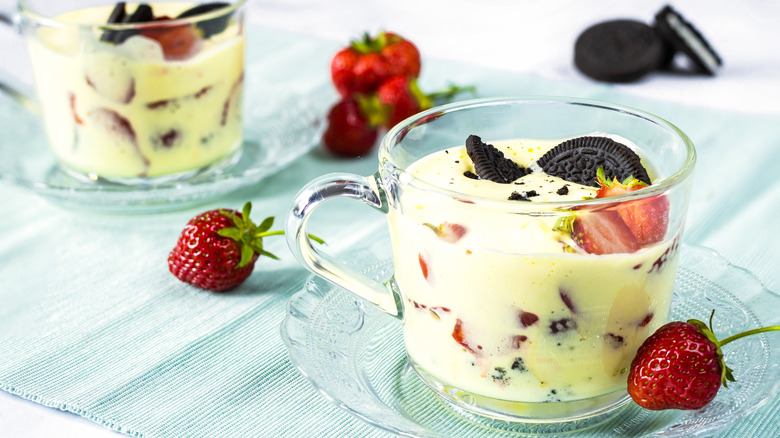Zabaglione: The Boozy Italian Custard You Should Know About
Thanks to Italy, all kinds of culinary wonders have become mainstream in the United States. It's easy to point to pizza and pasta as Italian claims to fame, while riceballs and seafood define the culture down south. Meanwhile, steak and focaccia are everywhere in the Tuscany region. And that's not even touching upon Emilia-Romagna's beloved cured meats.
Every region has its trademark savory cuisine, but Italian desserts warrant their own spot in the country's culinary rotation. Italy claims gelato, tiramisu, and cannolis ... though multi-colored spumoni and festive, sweet struffoli are not to be forgotten. Nor should you overlook ricotta-stuffed sfogliatelle, icy yet creamy granita, and marzipan-coated cassata. Who's hungry now?
Italy's dessert offerings obviously range far and wide, so a few delicious specialties are bound to fall through the cracks. One lesser-known dessert is perhaps one of Italy's simplest. Zabaglione, in its purest, original form, is a creamy and boozy custard. It has also become a trademark flavor in Italy. Pop into any gelato shop, and the glass case will likely harbor a zabaglione flavor. All you have to do is pick a cup or a cone.
Yet no matter the form your zabaglione takes, its predominant ingredient is likely to linger on your tastebuds. That ingredient is alcohol, which often takes the form of a particularly popular Italian wine.
Zabaglione is a custard laced with local wine or your booze of choice
According to The New York Times, zabaglione is a thick but smooth emulsion that balances the rich froth of egg-based custard with the flavor of wine. Also called zabaione, or sabayon in English, zabaglione is essentially a foamy custard that lets Marsala wine shine.
You'll recognize Marsala wine from chicken marsala, but clearly, the dry or sweet wine has purposes beyond dinner. However, the addition of Marsala wine is most common in America, per Serious Eats; Italy often opts to make the dessert with which wine is local.
So if you don't have Marsala wine on hand — or have a different go-to alcohol — there's no need to adhere to the recipe's exact ingredients. In fact, Serious Eats recommends Vin Santo, an Italian dessert wine, for your zabaglione. For an especially boozy kick, you can combine Vin Santo with rum or grappa. Alternatively, you can skip the wine altogether in favor of brandy or your spirit of choice.
Fair warning: the custard is bound to take on the flavor of whichever wine or liquor you choose, so make sure you like the taste before making your zabaglione.
The history of zabaglione is debated — but the dessert is undeniably Italian
Per Live in Italy, zabaglione's origins remain unclear, with various stories taking shape. Some believe an Italian leader from Emilia, named Zvàn Bajòun, stole a few ingredients from Italian peasants to feed his troops. The end product was likely an early version of the now-classic Italian dessert.
And that's only one option for the dessert's beginnings. Per Taste Atlas, zabaglione actually originated in Piedmont; Turin monk Pascual Baylón Yubero supposedly invented the dessert in the 16th century. The first recorded recipe for zabaglione, however, can be traced to a 1662 cookbook by Bartolomeo Stefani: a chef for the Republic of Venice and the Duchy of Mantua.
As such, the geographic origins of the dessert remain inconclusive, and despite its Italian ancestry, zabaglione bookmarks more meals in America than it does in Italy (via The New York Times). The dessert's timeline and geography are therefore up-in-the-air. Still, zabaglione's taste remains unique — and versatile enough for both sweet and savory dishes.
Making zabaglione is straightforward, suitable for both dinner and dessert
Whipping up a zabaglione requires few ingredients. It's a relatively mid-tier recipe in terms of time and difficulty. Per Alton Brown's recipe on Food Network, all you need are six egg yolks, half a cup of sugar, half a cup of Marsala wine, and a pinch of kosher salt. Couple those with some time on the stove, and you'll feed eight to ten people, no problem. The preparation and cooking process takes roughly 45 minutes in all.
Once your zabaglione is emulsified and creamy, you can add the likes of fresh berries for an Italian-inspired dessert. Or, get creative with toppings. Because zabaglione is a custard, it can be boosted by all kinds of additions ... though zabaglione can also transform into a savory side.
Nix the sugar and swap out a sweet wine for a dry one, and you can make a dinner-worthy sauce (via The New York Times). Your vegetables will get a creamy, umami boost when dipped in a miso sabayon, so embrace zabaglione's versatility. You'll enjoy your custard with dinner, as well as after.



